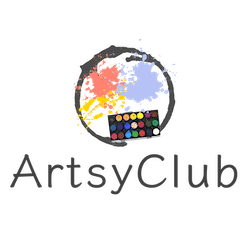Sketching Made Simple: Techniques for Beginners
TL;DRSketching is an accessible art form perfect for beginners to express creativity and improve observation skills. This article covers the basics, including tools, techniques, and tips, to help novices start their sketching journey confidently.

Table of Contents
Main Content
Understanding Sketching Basics
Before diving into the practical aspects of sketching, it's important to understand what sketching is and why it's beneficial. Sketching is the process of creating a rough or unfinished drawing, often with the intention of capturing the essence of a subject quickly or planning out a more detailed work. It's a skill that hones observation and enhances hand-eye coordination.
Essential Sketching Tools
To begin sketching, you'll need a few basic tools:
- Pencils: A range of pencils from hard (H) to soft (B) will give you a variety of lines and shades.
- Sketchbook: A good-quality sketchbook with durable paper that can handle erasing and different pencil grades.
- Erasers: A kneaded eraser for lightening lines and a hard eraser for removing them entirely.
- Sharpeners: Keep your pencils sharp for precise lines.
Basic Sketching Techniques
Here are some fundamental techniques every beginner should practice:
- Line Drawing: Start with simple line drawings to outline your subjects.
- Contour Drawing: Focus on the outer edges of forms and how they interact.
- Hatching and Cross-Hatching: Use parallel lines or intersecting lines for shading.
Developing Your Observation Skills
Observation is key in sketching. Practice looking at objects and scenes to understand their basic shapes, how light affects them, and their proportions. Try blind contour drawing, where you don't look at your paper while drawing, to improve your observation.
Practicing Proportions and Perspective
Getting proportions right is crucial for realistic sketches. Use reference points and comparative measurement to ensure accuracy. Learn the basics of perspective to give your sketches depth, starting with one-point and two-point perspective techniques.
Exploring Shading and Texture
Shading adds dimension to your sketches. Practice with different pencil grades to see how they affect the darkness and texture of your shading. Experiment with different strokes to mimic textures like fabric, metal, or wood.
Tips for Keeping a Sketchbook
A sketchbook is an artist's best friend. Use it to practice daily, capture ideas, and reflect on your progress. Don't be afraid to make mistakes—it's all part of the learning process.
Conclusion
Sketching is a rewarding and enjoyable skill that can be learned by anyone willing to practice. With the right tools and techniques, beginners can quickly see improvements in their work. Remember, the key to becoming better at sketching is consistent practice and a willingness to learn from your mistakes. Grab your sketchbook and pencils, and start your sketching adventure today!



